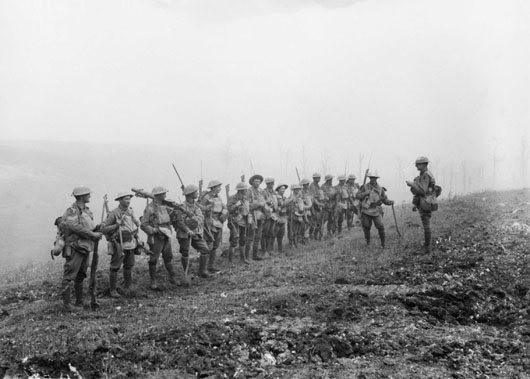Amiens Breaking Through the Trenches, 1918
The Battle in Brief
Setting out at 5.30 am from positions south of the River Somme and east of Villers-Bretonneux and Le Hamel, the Australian troops were quick to accomplish all of their objectives. The element of surprise was maintained throughout the build-up across the entire front, and was so great that many Germans were captured while still eating breakfast.
In just over 3 hours, the enemy’s front line was overrun and a large number of Germans had surrendered. The Germans suffered 27,000 casualties including 17,000 prisoners with 450 guns captured. The blow to German morale led German Commander Erich Ludendorff to famously describe the first day of the battle as “the black day of the German Army.”
Amiens was also one of the first major battles where tanks were successfully deployed supporting the infantry. Following Amiens, fighting became more mobile, accelerating up until the armistice was signed on 11 November 1918.
Location
Media





